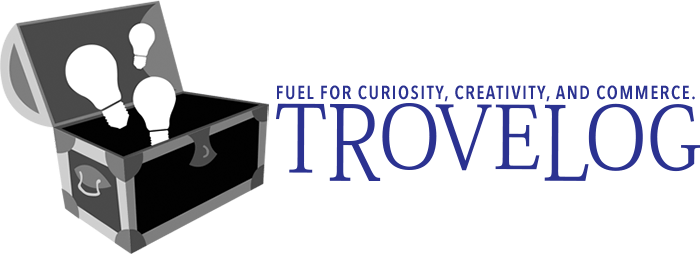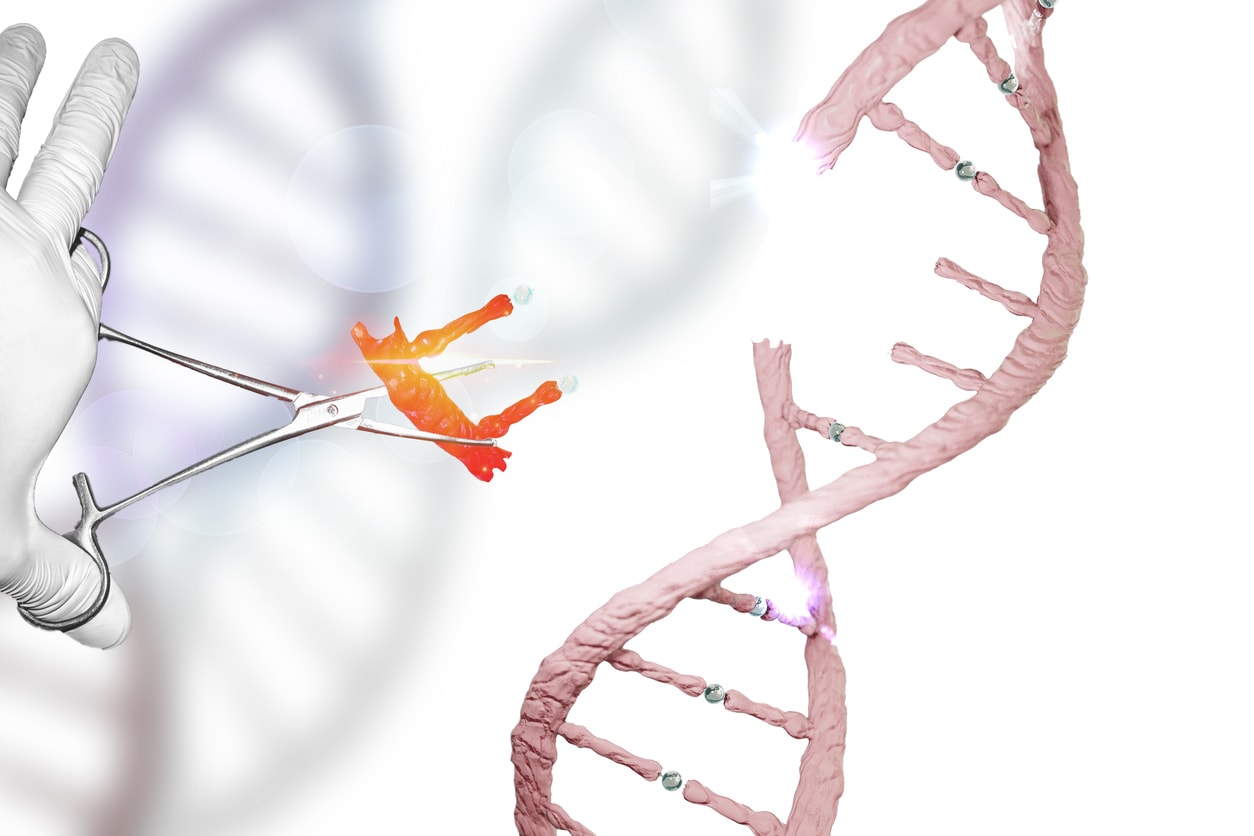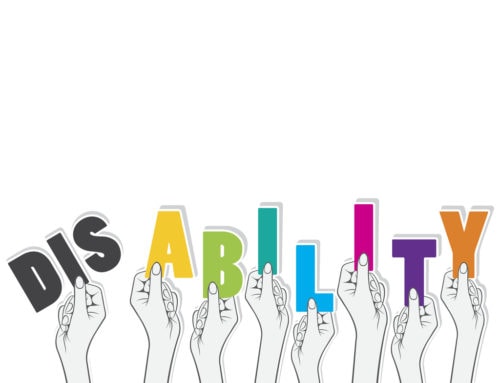biohackers: people who try to modify a biological system – a plant, another animal, or their own body. Includes: DIY genetic self-testing; novel diet or sleep regimens; or device implantation.
*** TROVELOG ***
biohacking: The activity of exploiting genetic material experimentally without regard to accepted ethical standards, or for criminal purposes.
See definition at: Oxford Dictionaries: biohacking
◄TrovelogTrovelogTrovelogTrovelogTrovelogTrovelogTrovelog►
Biohacking refers to the application of IT hacks to biological systems – most prominently, the human body – but also the entire biosphere. Biohacking encompasses a wide spectrum of DIY IT projects and ideas.
Biohacking is generally linked to a form of the term “hacking” but implies a positive purpose. “White hat hacking” is a term that can be used to distinguish biohacking from IT manipulation that is used for fraud or criminal purposes. Some also describe biohacking as belonging to a “hacker ethic” that is based on positive principles, such as universal access to information and general quality of life improvement.
Biohacking can include body modifications, in which groups of people known as “grinders” experiment with implants and other methods of applying technologies to their bodies, such as wearable computing. Other types of biohacking may involve self-medical hacks, such as home DNA or genetic testing. Biohacking also can apply to the use of advanced IT for hydroponic plant systems or other projects that apply IT concepts to biological organisms.
See definition at: Techopedia: biohacking
◄TrovelogTrovelogTrovelogTrovelogTrovelogTrovelogTrovelog►
In the past few years, so-called biohackers across the country have taken gene editing into their own hands. As the equipment becomes cheaper and the expertise in gene-editing techniques, mostly Crispr-Cas9, more widely shared, citizen-scientists are attempting to re-engineer DNA in surprising ways.
Until now, the work has amounted to little more than D.I.Y. misfires. A year ago, a biohacker famously injected himself at a conference with modified DNA that he hoped would make him more muscular. (It did not.)
. . .
The most pressing worry is that someone somewhere will use the spreading technology to create a bioweapon.
. . .
The F.B.I. has befriended many white-hat biohacking labs, among them Genspace in Sunset Park, Brooklyn. Behind an inconspicuous steel door on a gritty, graffiti-lined street, biohackers-in-training — musicians, engineers, retirees — routinely gather for crash courses in genetic engineering.Participants in “Biohacker Boot Camp” learn basic technical skills to use in homegrown genetics projects, like concocting algae that glows.
See article at: Emily Baumgaertner, “As D.I.Y. Gene Editing Gains Popularity, ‘Someone Is Going to Get Hurt’,” The New York Times, May 14, 2018
◄TrovelogTrovelogTrovelogTrovelogTrovelogTrovelogTrovelog►
Aaron Traywick lived life as a spectacle with all cameras rolling, so for those who knew him, it wasn’t surprising that his death was shrouded in spectacle and controversy, too.
At just 28, Traywick was among the most infamous figures in the world of biohacking—the grandiose CEO of a tiny company called Ascendance Biomedical whose goal was to develop and test new gene therapies without the expense and rigor of clinical trials or the oversight of the FDA. Traywick wanted to cure cancer, herpes, HIV, and even aging, and he wanted to do it without having to deal with the rules and safety precautions of regulators and industry standards.
. . .
To “walk around” regulators, Ascendance and other biohackers typically rely on testing products on themselves. Self-experimentation, although strongly discouraged by agencies like the FDA, makes it difficult for regulators to intervene. The rules that govern drug development simply aren’t written to oversee what an individual might do to themselves.At another conference in February 2018, Traywick dropped trou on stage and injected into his bare left thigh an experimental herpes treatment developed by his company. With that motion, he thrust the clandestine world of biohackers into the spotlight, defining for the world an image of these DIY biologists as a group of madcap impresarios. Shortly after, his company imploded in a conflagration of Jerry Springer-esque drama, some of which was caught on camera by Vice. Most of his coterie of biohacker contractors either quit or were fired (depending on who you ask), leaving Traywick with therapies he’d promised to develop but no one to do the work. Still, Traywick seemed undeterred, recently launching a presale campaign in which people paid $35 to join a waiting list for Ascendance’s unregulated therapies, even as it seemed highly unlikely that they would ever come to market.
Then on Sunday, this dream of low-cost, open-access gene therapy came crashing down, when at the end of a session in a sensory deprivation tank at a D.C. spa, Traywick was found dead. The immediate reaction was disbelief. By Monday morning, my Facebook inbox was flooded with messages from biohackers wondering if this was perhaps yet another one of Traywick’s stunts. Rumors and conspiracy theories ran amok. His exact cause of death is still unknown; police say the autopsy results are not expected for several weeks.
While Traywick’s life tested the limits of DIY science, his death symbolizes a crossroads for the movement. Will it continue to push the limits of self-experimentation or will it take steps to ensure safety?
“Before Aaron, no one cared about what biohackers did,” said Josiah Zayner, Traywick’s rival of sorts and a biohacker who pioneered the on-stage injection stunt, in August of last year when he injected himself with a gene to promote muscle growth. “Then we all realized maybe we should care more.”
See article at: Kristen V. Brown, “What Does an Infamous Biohacker’s Death Mean for the Future of DIY Science?,” The Atlantic, May 5, 2018
◄TrovelogTrovelogTrovelogTrovelogTrovelogTrovelogTrovelog►
Monthly Google searches for “intermittent fasting,” which has become a catchall term for various forms of the practice, have risen tenfold over the past three years, to as many as 1 million. That’s about as many as “weight loss” gets, and more than “diet.” Now comes the next step, as businesses try to turn various forms of the craze into profit.
The idea may sound troubling depending on your relationship with food, but paid-for fasting regimens are finding a new audience in the Valley, partly because they’re framed in terms of productivity, not only weight loss. (Fasting falls under the techy-sounding buzzword “biohacking,” like taking so-called smart pills or giving your brain tiny shocks.) There’s a growing body of research and anecdotal evidence showing a link between periods of noneating and increased focus and output, and perhaps even longer life. “Periods of nutrient restriction do good things,” says Peter Attia, whose medical practice focuses on the science of longevity. “The subjective benefits are evident pretty quickly, and once people do it, they realize—if this is going to give me any benefit in my performance, then it’s worth it.”
See article at: Tom Giles and Selina Wang, “Silicon Valley Wants to Cash In on Fasting,” Bloomberg, April 24, 2018
◄TrovelogTrovelogTrovelogTrovelogTrovelogTrovelogTrovelog►
. . . I became consumed with the idea of minimizing my need for sleep as much as possible. I had always required less sleep than my wife, but I thought that if I could just find some clever solution, some trick or tool, I might be cured of this time suck forever. I wanted to hack my need for sleep.
Eventually, I researched polyphasic sleep, a trend among the kind of people who quantify every aspect of their nutrient intake. Taken to its extreme, the practice promised the magic I was looking for: Simply sleep for 20 minutes or so every few hours, and eventually you’ll only need two or three hours of sleep a day. Sleep would be conquered! In its place, productive bliss.
I never ended up attempting polyphasic sleep. Its daunting requirements seemed destined to interfere with any semblance of normal family life. But the siren song of the quick, easy fix through a simple behavioral change or chemical consumed continues to appeal to me, as it does to many others: In Silicon Valley, this subset of biohacking is as strong as ever. Often coupled with its pharmacological sibling of nootropics (chemicals for cognitive enhancement), this trend of attempting to reengineer and overclock one’s physiology promises to make your body faster, stronger, and better in nearly magical ways.
Often going hand in hand with efforts to quantify the body and behaviors through all manners of technology, this hacking ethos relies on the idea that if people can just collect more data to better understand themselves, perhaps they can engineer themselves to perfection. We can hack our technologies, and even our societies, so why not ourselves?
Alas, things are not so straightforward. While there are many similarities between the biological and the computational, biological systems are complex on an entirely different level. They have evolved over millions of years, with a great deal of feedback and a mind-bogglingly large number of interacting components. And, in many ways, they’re already well-tuned and optimized.
See article at: Samuel Arbesman, “The Human Body Is Too Complex for Easy Fixes,” The Atlantic, April 12, 2018
◄TrovelogTrovelogTrovelogTrovelogTrovelogTrovelogTrovelog►
“What’s that thing sticking out of your head?” a woman asks the man with a serpentine antenna between his eyes.
Neil Harbisson turns, parts his bowl-cut blond locks, and curves the antenna toward the buttinsky. “It’s a way to hear color,” he says.
“What’s it connected to?” she asks.
Harbisson looks up at her with smiling, cobalt eyes. “My brain.”
At an outdoor cafe at L.A.’s Original Farmers Market, passersby are constantly checking out Harbisson, 34, and his partner, Moon Ribas, 31. In her left arm, she has a Bluetooth implant designed to analyze the earth’s seismic movements. What’s it feel like? “Two heartbeats,” she says.
Harbisson, whose U.K. passport shows he’s the first legally recognized cyborg, was born colorblind. He designed his antenna—which translates colors into one of 360 musical tones he’s memorized—back in 2003 with help from a cyberneticist. At first, he connected it to headphones and a laptop. Eventually, he persuaded a surgeon to drill into his skull, implant a chip, and fuse the antenna to his occipital bone.
The couple say merging technology with their bodies has created new senses. “We are transspecies,” says Ribas, whose three-year-old seismic implant vibrates at different intensities based on data from online seismographs. As with other biohackers, their claims—he says my color registers as an F sharp, for example—are difficult to verify. But their London startup, Cybor Nest, is manufacturing DIY kits meant to bring their transhumanism closer to the mainstream.
. . .
Stanford genetics department chairman Michael Snyder says these implants aren’t as fringe as they sound, noting that he employs similar medical sensors to detect colds, Lyme disease, and diabetes risk. He calls the North Sense “analogous to the radiation monitor that I use.” The World Economic Forum says Cyborg Nest’s type of biohacking could be commonplace by 2020. “If you’re alive today, you’re probably going to end up having at least one electronic attachment,” [Cyborg Nest’s co-founder and Chief Executive Officer Liviu Babitz] says.See article at: Adam Popescu, “This $425 DIY Implant Will Make You a Cyborg,” Bloomberg, February 16, 2017
◄TrovelogTrovelogTrovelogTrovelogTrovelogTrovelogTrovelog►
Dave Asprey is following his usual morning routine: drinking coffee and doing drugs. It’s a Tuesday in March, and Asprey, who is 6 feet 4, with graying brown hair and a stubbly beard, is in his office in the countryside town of Cobble Hill, B.C., 45 minutes north of Victoria. His children play in the house just a few steps away. He reaches into a large armoire full of bottles, carefully gathers about 20 pills, and washes them down with a gulp of water. Then he takes a sip of coffee. The milky brown concoction sloshes in his clear plastic mug like a pint of Guinness.
Asprey, 42, is a self-described biohacker—somebody who uses science and technology to make his or her body function better and more efficiently. There are about 100,000 biohackers worldwide, Asprey estimates, and among them, he’s a celebrity. His website, bulletproofexec.com, drew 6 million unique visitors last year. Almost 50,000 people follow him on Twitter, and he has an additional 140,000 fans on Facebook. Since 2009 he’s posted blog entries and podcasts about things such as orange-tinted glasses, which he says block out blue-spectrum light, allowing us to sleep so well that we need only six hours or less, and the minimum number of days a man should wait between orgasms, a protocol Asprey found in an ancient Taoist text. (Age minus 7, divided by 4.) But of all his out-there health claims, it’s the coffee he’s drinking—blended with butter made with milk from grass-fed cows and a medium-chain triglyceride (MCT) oil derived from coconut oil—that’s making Asprey most famous.
He calls the mixture Bulletproof coffee. Drink it, the name implies, and you’ll feel invincible. “Fats and caffeine help stimulate the brain,” Asprey says in his office, taking another sip.
See article at: Gordy Megroz, “Buttered Coffee Could Make You Invincible. And This Man Very Rich,” Bloomberg, April 21, 2015
◄TrovelogTrovelogTrovelogTrovelogTrovelogTrovelogTrovelog►
See related Trovelog posts: raw water <>






